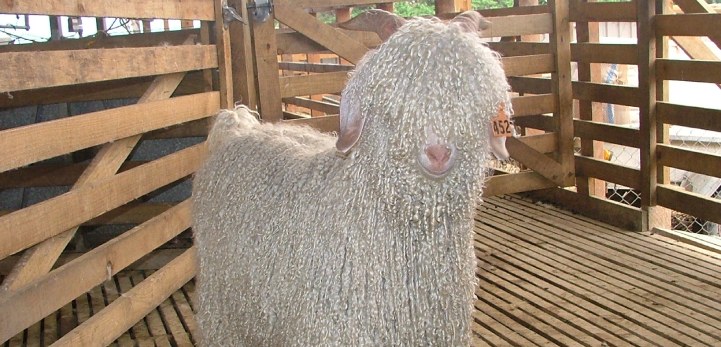Shearing Sheds
Shearing sheds are some of the most important buildings for fibre producers, as this is where the years fleeces are harvested. While this infrastructure may only be used for short periods of time each year, it is important to keep sheds in good conditions. High quality buildings are important for maintaining a safe and productive working environment for staff (shearers and classers).
Important aspects of shed conditions include:
Good lighting. Poor lighting can be improved through the installation of well-placed skylights, windows, or through addition of artificial lights.
Ventilation. The shed should be well ventilated, as fresh air flow decreases the amount of heat and polluted air inside the shed, creating safer working conditions.
Removal of contaminants. The shed must be thoroughly cleaned prior to shearing, to remove any contaminants present (such as straw, feathers, bailing twin, or other rubbish), so that fleece lines remain cleaned and pure.
Flowing design. The shed should be designed to allow for uninterrupted movement of animals, from the pens to the board to the count out pens, to reduce stress on animals during shearing times.
Set up of equipment. The placement of equipment within the shed must allow for an unimpeded flow of fleeces from the shearing area to the skirting table. Placement of fleece bins must be easily and safely accessible. The press must be in an open location, without any nearby obstructions.
Shearing Equipment Checklist:
- Shearing plant
- Fleece bins or wool packs
- Wool press (optional)
- Table suitable for handling Mohair. This should have a 2-3cm mesh, with allows second cuts and short fibre to fall through.
- Drying rack – for damp or stained fibre.
Skirting the Fleece
- The following procedure should be adopted as routine:
- Sweep the board between animals, to keep fleeces free from locks
- Stained wool is removed from bellies – this may include the brisket or pizzle area, keep separate
- Remaining belly wool is placed in its own line
- Throw fleece over skirting table
- Remove all stained pieces – keep separate
- Examine the fleece for kemp – if found, remove kemp and keep separate
- Remove any sections which contain heavy contaminates, such as grass seeds or burr
- Make an appraisal of the remaining fleece and remove any areas significantly different to the bulk, e.g. course hairy britches or strong neck hair
In most cases, mohair fleeces produced on clean open pastures will only require a light skirting.

